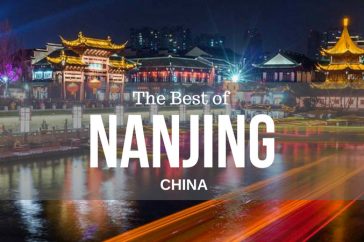Chongqing (重庆市) is located in the southwestern part of China’s inland, bordering Hubei and Hunan in the east, Guizhou in the south, Sichuan in the west, and Shaanxi in the north. The total area of 82,400 square kilometers, jurisdiction over 38 districts (counties) with a resident population of 31,017,900 and…
-
-
China’s Secret World Wonders and World Heritage Sites
Did you know that China has some 52 sites listed under UNESCO World Heritage? Ranging from ancient wonders to natural wonders, you’ll be amazed once more by some that you will know, and some that many never knew existed. Well, with that epic build-up, here they are, China’s 52 amazing…
-
Guangzhou Travel Guide [inc. The Top Things to Do, Eat, and Where to Stay]
The capital of Guangdong province, Guangzhou, is a vibrant city that is the beating heart of trade, not only in the province, or southern China, but perhaps even the whole of China itself. It’s home to the country’s number one trade fair, the Canton Fair, and has throughout history been…
-
The Top 10 of Changsha: Attractions, What to Eat & Where to Stay
Changsha, the capital of Hunan Province, is home to 7 million people and renowned for its spicy local cuisine. For most tourists its a jumping point to head onwards to Zhangjiajie, Fenghuang, Wulingyuan, or Shaoshan and the birthplace of Mao Zedong. That’s a shame as Changsha offers quite a rich…
-
Welcome to Nanjing – The Top Ten Attractions, Hotels, Must Try Foods & Transport
Nanjing, the capital of Jiangsu Province, is a beautiful, charming and ancient city that has a progressive feel. It has a long history dating back as far as 472 BC and has been the home of many of China’s emperors thus giving the city a rich treasure trove of cultural…
-
Xiamen Travel Guide inc. Gulangyu Island and Top Attractions
Xiamen, or Amoy as some call it, is a small city by Chinese standards being home to only around 600,000 people but it can still get pretty busy being a popular tourist destination for many Chinese. It’s an attractive coastal city, clean and has a certain charm about it not…
-
Macau Travel Guide – the Top Sights & Things to do
Macau is renowned for its casinos and its massive entertainment offerings, but the city offers a host of attractions, an insight into China’s colonial history, beautiful architecture, and villages by the beach that you won’t want to leave. Jump To: Map – Top Ten Things to do – Top Ten…
-
Welcome to Shenzhen, China [inc Top 40 Attractions and Top Places to Stay]
Shenzhen is an interesting city as it is another city that tells a story about the Chinas economic transformation. Shenzhen was not much more than a fishing village until about thirty years ago when a man named Deng Xiaoping had taken the reins as China’s leader from Mao Zedong in…
-
Welcome to Xi’an China + Top Ten Attractions/Hotels/Food/Transport
Look at any half-serious planned tour of China and the city of Xi’an will be on the list of destinations, and for good reason. It’s a city that has a depth of historical attractions rivaling that of Beijing, and many believe the jewel in Xi’an’s list of attractions is still…
-
The Ten Best Sights and Attractions in Chengdu + Map
Chengdu, unfortunately, doesn’t make it on to many peoples list of places to visit while in China unless they are visiting Tibet or maybe going to see the Giant Buddha. That’s a bit of a shame as it is a really nice city, with friendly people and a somewhat relaxed environment compared…
-
Essential Intro: Chengdu of Sichuan Province [Top Sights, Food,Transport, & Map]
Chengdu is the capital of Sichuan Province which is located in western China, bordering with Tibet. It’s location actually makes it a great place to get started from, or base yourself in, if you are planning to visit Tibet or the southwest region of China including such places as Leshan…










